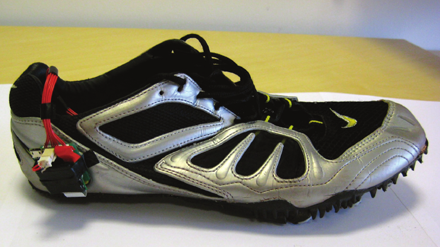Sports Sensing: An Olympic Challenge for Computing
By Robert Harle and Andy Hopper
NOTE: This is an overview of the entire article, which appeared in the June 2012 issue of Computer Magazine.
Click here to read the entire article.
Technology plays an increasingly visible role in these international competitions as experts use computers to dissect, benchmark, and analyze the superhuman performances on display. But technology is also playing a less noticeable, but increasingly important, role in the training behind the performances.
Athletes have long benefited from computing technology through the design of better surfaces, equipment, and clothing. However, using such technology during training to improve performance has been hampered by the observer effect: the athlete’s awareness of the system impacts performance and hence devalues any measurements the system makes.
Sensor nodes are becoming small and light enough to blend into the training environment and, more importantly, for athletes to wear inconspicuously. However, it has been more challenging to develop wearable technology capable of replacing the bulky machines that researchers currently use to analyze complex body movements in order to maximize athletic performance while minimizing injury risk.
The article points out that all of today’s off-the-shelf sensor systems produce qualitative results, without the accuracy needed for true biomechanical analysis to provide broad estimates of quantities attractive to the hobbyist. In contrast, their research has focused on how to produce quantitative measures of performance that are acceptable to amateur and elite athletes as well as sports scientists.
For this goal to be achievable, sensors must be undetectable. They must be more than invisible – athletes will discard on-body nodes with noticeable inertia or uncomfortable attachments at the first opportunity. On the other hand, more traditional sensing challenges are less problematic in the sports science domain. For example, battery life, the bane of many wireless sensor networks, is far less of an issue since training sessions are measured in small multiples of hours and are often punctuated by breaks during which batteries can be replaced or recharged if necessary.
Futhermore, athletes and coaches alike prefer to concentrate directly on the performances, negating the need for real-time feedback from sensing systems. Sensor data is collected and processed for review shortly after a specific performance or even after the entire training session.
At the authors’ Cambridge University Computer Laboratory, they have developed the Imperceptible On-body sensor Node (ION) specifically with athletes in mind.
At 25 x 35 x 8 mm and 4 grams, the ION board has minimal inertia even after adding a 4-g, 200-mAh Lithium-ion battery that has a similar size and supports numerous hours of continuous sensing. Although multiple IONs can sense at many body sites simultaneously, the authors have initially deployed it on shoes for the reasons discussed in the article. Their trials so far have involved sprinting, a fundamental skill for many sports with physical movements at the extremes of human ability and for which there has been surprisingly little quantitative measurement.

Sprinting shoe augmented with the Imperceptible On-body sensor Node (ION).
As the figure above illustrates, augmenting a sprinting shoe with the ION produces a minimal observer effect.
To demonstrate the utility of our system, they set out to establish the link between a sprinter’s speed and ground contact time. Correlation of these two quantities had long been hypothesized but not proven to satisfaction. The article describes the details of the sensor implementation in a sprinting shoe.
The current ION system is undetectable and can easily capture information about entire sprint repetitions. This has enabled them to explore the relationship between speed and ground contact time. They have looked at a mix of elite and amateur sprinters over a series of sprints and discerned a strong exponential link between the two quantities.
The authors conclude that their data convinces them that sensing in the shoe is both viable and scalable. They envision the technology filtering down to the general market. There’s no reason why everyday shoes couldn’t continually monitor and analyze our movements, highlighting everything from changes in gait (hinting at a need for orthopaedic evaluation) to the impact forces of hard falls (which could help diagnose potential injuries). They also are exploring other on-body sensing locations.
ABOUT THE AUTHORS
Robert Harle is a lecturer in the Digital Technology Group at the Cambridge University Computer Laboratory. Contact him at robert.harle@cl.cam.ac.uk.
Andy Hopper is a professor of computer technology and head of the Cambridge University Computer Laboratory. Contact him at andy.hopper@cl.cam.ac.uk.






